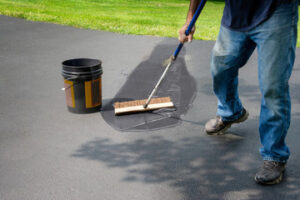Creating an attractive and functional landscape can add considerable economic value to your home. It also helps reduce your energy bills and buffers seasonal temperatures. Studies show that being in nature improves mental health.
Y&L Landscaping involves adding plants, changing the terrain and constructing structures. It is important to know which style of landscaping you want before contacting a professional.

Landscape design
Landscape design is the art of arranging hardscape and softscape elements to create a desired effect. This process involves the consideration of a variety of factors, including climate, soil type, topography, and existing vegetation. It also considers the use of water and the impact on natural resources, such as soil erosion. The end result is a space that is both functional and aesthetically pleasing. Landscape designers may specialize in residential or commercial landscapes.
The design of a landscape can be influenced by the surrounding environment and architectural style. For example, a house in an urban setting can benefit from the addition of green space. This will add curb appeal and make the property more appealing to potential buyers. A residential garden can be designed around a specific theme, such as a waterfall or pond. This will help to create a sense of tranquility and relaxation for the homeowner.
While a well-cared for lawn is a great first step, a professionally designed landscape will transform your yard into a beautiful retreat while minimizing the impact on the plants and wildlife in your yard. A great landscape designer will take a holistic approach to your project and work with you throughout the entire process. They will listen to your needs and goals, then create a plan that is unique to you. They will also ensure that the design meets local codes and regulations.
There are several different elements to landscape design, such as color, line, form, and texture. Color is an important element because it creates contrast and unity in a landscape. Using a color wheel is an excellent way to determine the best colors for your landscape.
Line is another element that can be used to add structure to a landscape. It can be used to create curves, vistas, and paths. A landscape with good line will have a smooth transition from one area to the next. For example, a walkway should not end abruptly on a lawn. The use of lines will also create a sense of rhythm.
Form is an important aspect of landscape design because it defines the shape of a plant or object. For example, a tree can be shaped into a columnar or globular shape. The form of a tree can also be described as formal or informal, which refers to its overall appearance.
Plantings
The plantings of a landscape are more than just decorative or aesthetic elements. They can provide a variety of functions and should be planned to meet as many needs as possible. For example, plants can serve an engineering role in addressing drainage or erosion problems. Plants can also help to screen objectionable views from or to a property and to create buffers between divergent activities.
Ideally, a landscape should be designed with plant material that is well-suited to the climate. In addition, the design should incorporate plants that can be easily maintained in an aesthetically pleasing way. Some common landscaping plant types include shrubs, ground cover and trees. These plants can be planted as background or foreground, as accents, or to provide contrast with other plant species.
Landscaping can be done for both residential and commercial properties. The process involves changing the natural features of a site, including adding plants, changing the terrain and construction of structures such as fences, walls, patios and decks. It can also involve designing and creating gardens, parks, trails and other amenity features.
Plants have been used in landscape design for centuries, with the goal of making a space more attractive and functional. Today, people are experimenting with a wide variety of styles and techniques to create unique outdoor spaces. Many are incorporating sustainable practices, such as water-saving landscapes and native plant species.
A successful landscape will be both functional and beautiful. It should be designed to meet the specific needs of the homeowner, such as providing privacy or attracting wildlife. A good landscape will also complement the home’s architecture and be a place for relaxing, entertaining or working.
The design of a landscape should include plants that can serve as a living sculpture, softening the surrounding architecture. The landscape should also feature a variety of textures, colors and forms to add interest. The height of the plants should vary from front to back, allowing them to provide spatial definition. For example, taller plants like trees and large shrubs can serve as screens to block out views or as canopies for shade.
Hardscapes
Hardscapes are non-living elements of a landscape design that include walkways, patios, driveways, and retaining walls. They add structure to a yard and enhance its appearance by providing texture and contrast to the softer plants and grasses in the garden. They can also define areas of the garden and direct visitors through different zones of the landscape. Hardscapes can be made from a variety of materials, including pavers, stones, concrete, and wood.
When choosing a hardscape, consider the size of your space and its use. For example, if you have limited outdoor space, a small patio may be sufficient for seating and eating. On the other hand, a large patio might be needed for entertaining or relaxing. If you’re unsure of the best hardscape options for your landscape, ask your landscaping company for advice. They can help you choose a style that suits your needs and budget.
In addition to enhancing the look of your backyard, hardscapes can increase the value of your home. A well-designed and aesthetically pleasing hardscape will attract buyers and encourage them to visualize themselves living in the space. They can also provide a focal point that defines your yard and draws the eye, creating an inviting outdoor area.
Using hardscapes can also minimize erosion and flooding in your yard. When planning your hardscape, make sure it reflects the natural drainage pattern of your landscape and can support the water flow. Alternatively, you can install a rain garden that collects water and uses it to irrigate your plants.
Some hardscape designs include curved lines to add visual appeal and contrast to the straight lines of your landscape. However, you should be careful not to overdo this and create a jarring, disconnected effect. Your hardscape should feel like a natural part of your yard, so try to incorporate as many curves and rounded features as possible.
Another benefit of hardscapes is that they require less maintenance than a traditional garden. The materials used in hardscapes are designed to be durable and low-maintenance. Additionally, they are usually simple and streamlined, which means that there are fewer nooks and crannies for dirt to collect.
Maintenance
Keeping the yard and gardens looking beautiful and well-groomed can improve the appearance of a home or business, as well as increase its value. However, it can be difficult to keep up with the many tasks involved in landscape maintenance. Hiring a professional landscaper is the best way to get your lawn and garden in top condition. These professionals can handle lawn care, plantings, hardscapes, and irrigation, as well as help with pest control, weeding, mowing, pruning, fertilizing, and hedging.
A professional will be able to help you choose plants that will thrive in your climate and soil conditions. They can also recommend ways to minimize water usage, weeds, and insect pests. They can also do a comprehensive soil test to determine the type and amount of nutrients that are needed in the soil. This will prevent the need to constantly irrigate your garden and save you money on water bills.
Many landscape maintenance tasks can be time-consuming and tedious, but they are essential to the health of your garden. Some of these include lawn care, aeration, and dethatching. Performing these tasks will remove the thatch in your lawn and loosen the soil, allowing water and nutrients to reach deeper into the soil. It is also important to prune your shrubs and trees at the right time. A professional knows how to do this without damaging the plant.
Landscapers can help with a variety of other outdoor projects, such as patios, walkways, steps, and retaining walls. These are often built to complement existing landscapes and provide additional functionality, such as creating outdoor living spaces, providing shade, and controlling erosion. They may also install outdoor lighting and add decorations such as fountains to enhance the beauty of the garden.
In addition to landscaping, some landscapers specialize in horticulture and can provide a full range of lawn and garden services for commercial properties, HOAs, and municipalities. They can even work with native trees and shrubs to replace fencing, increase privacy, and bring curb appeal to homes and businesses. Some landscapers are also experts in water conservation, reducing the use of chemicals, and minimizing waste.








